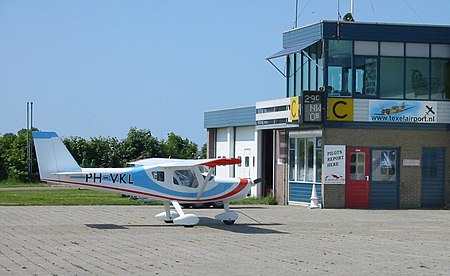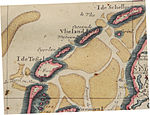Texel International Airport

Texel International Airport (ICAO: EHTX) is a small airport located 3.5 NM (6.5 km; 4.0 mi) north northeast of Den Burg on the island of Texel in the north of the Netherlands. It has a customs service to handle international flights making it an international airport, though no scheduled international flights take place from the airport as the name might suggest. Because of this, it has no IATA code assigned to it. The airfield is mainly used by small piston engine aircraft, but turboprops such as the Fokker 50 and small jets such as the Cessna Citation can also land at Texel. A lit platform for helicopters is also available. The biggest aircraft ever at Texel Airport was the Fokker 100, the biggest helicopter was a Mil Mi-26. One of the main activities on Texel Airport is skydiving. The island itself is a popular tourist destination especially during summer and so a lot of private pilots come to the island for recreation. There is also a small museum showing the history of aviation on the island.
Excerpt from the Wikipedia article Texel International Airport (License: CC BY-SA 3.0, Authors, Images).Texel International Airport
Postweg, Texel
Geographical coordinates (GPS) Address External links Nearby Places Show on map
Geographical coordinates (GPS)
| Latitude | Longitude |
|---|---|
| N 53.115277777778 ° | E 4.8336111111111 ° |
Address
Texel International Airport
Postweg
1795 JK Texel
North Holland, Netherlands
Open on Google Maps










